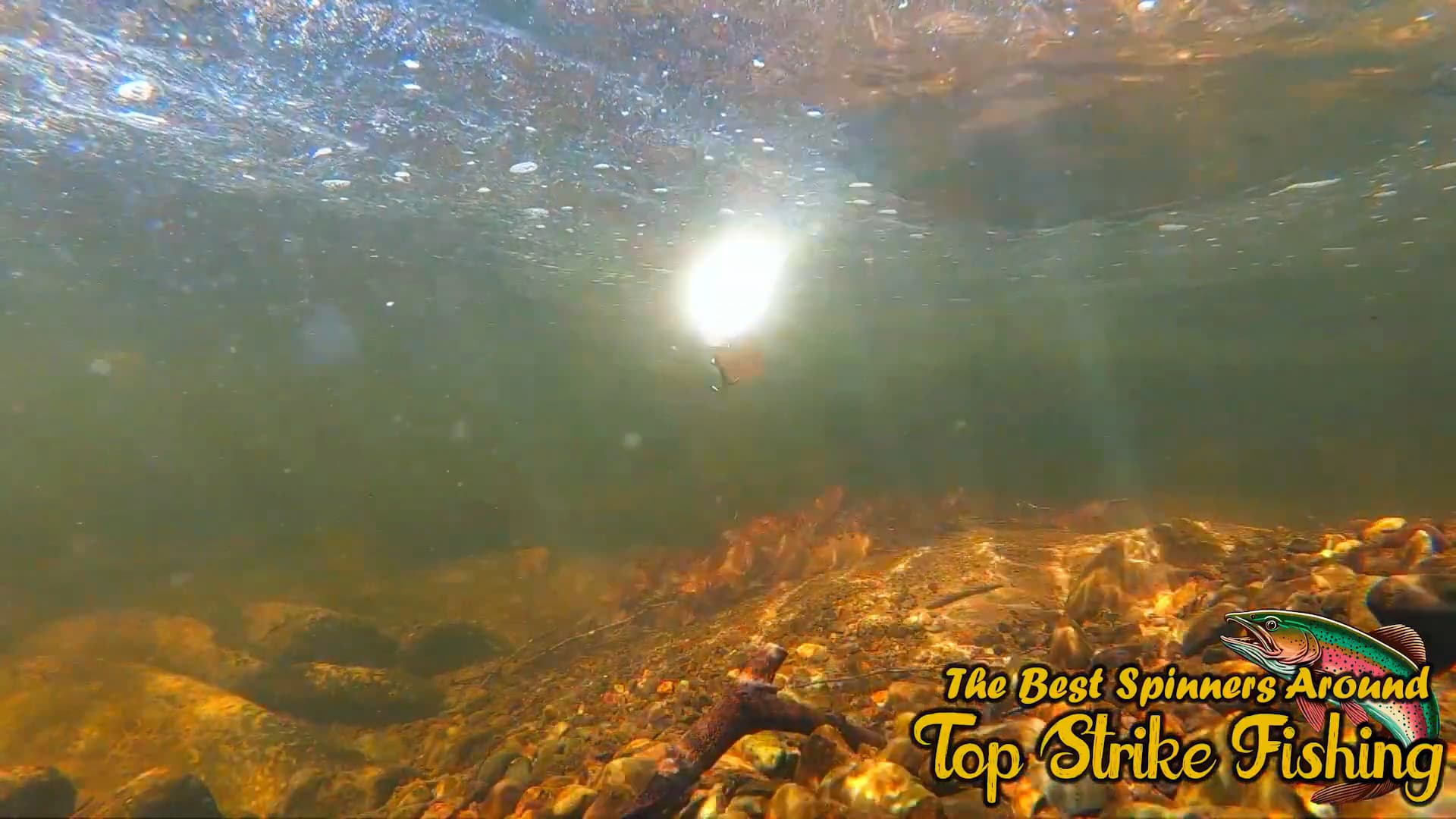Steve Rogers Outdoors recently posted an excellent video in which he explains the fundamental properties of flash on fishing lures and how anglers can use flash to attract bass. Being that flash is such a core design element of our inline spinners, we reached out to Steve and asked for permission to post his analysis here. Additionally, Steve will be including our spinners in the upcoming testing discussed at the end of this article.
Anglers have been using flash to attract fish for probably as long as people have been fishing. But if we understand flash and what is actually happening, it’s going to help us use it to our advantage much more effectively.
Bass are attracted to different levels or intensity of flash for different reasons. It could be just their natural curiosity; we know they are super curious fish. Or it could be because this flash imitates something like schools of baitfish moving around through the water column.
Regardless, the effectiveness of lure flash is absolutely dependent on two key factors: the amount of light available at depth you’re fishing, and a direct line of path for the flash to be visible.
Lure Flash in Deep Water
Water is an amazing property, we know this. And because it behaves so much differently than air, this direct line of path or direct light path only happens in the very top portions of the water column.
As we go deeper into the water column, that direct light path, a direct line of light, is quickly diffused. And because of this, this flash that we often think of starts to disappear.
Look at the flutter spoon below as it moves through the very top portion of the water column. It acts and behaves exactly like we think it should with all kinds of flash.
But watch as it sinks. It doesn’t take long and there is literally zero flash. In fact, it basically disappears. And this is not that deep of water — we can actually see the bottom.
Because the light is diffused so much, the flash of that spoon is gone and the direct light path between the lure and us is no longer there. So if you want to take advantage of the flashing properties of lures, that upper portion of the water column is your friend.
And yes, I’ve caught plenty of bass on flutter spoons in deep water. But it’s not from flash like I initially thought. It was the other factors going on with this lure, such as the dying baitfish fluttering presentation and the resulting vibration signatures it was putting off.
Direction of the Lure’s Flash
Okay, so the flash is only happening with our lures in that upper portion of the water column. Great, so you may be thinking “I’m just going to fish shallow.” Well, that’s not where the direct light path factor or situation stops.
For example, take a look at the spinnerbait above. When it’s coming straight at us, moving right through the water column, we cannot see the flash. There is no direct line of sight between the blade and the camera or us.
But when that lure changes direction because we either hit something like a branch as you can see in the clip below, or because we deliberately bounce the blades, all of a sudden the flash is visible.
We observed the same thing with a stickbait. There was no visible flash when it was reeled directly at our camera, but when we look from the side, we can see the flash and actually from a pretty good distance.
Now picture bass down there in the water column when we’re retrieving lures that we want to flash. In a static path with no erratic motion, no random movement whatsoever, we’re really relying on those bass being on the sides of the lure.
But as soon as we start to bounce those lures, having an erratic slashing action like a jerkbait, all of a sudden, now we get flash in all different directions. And we literally double our chances of the bass seeing that flash, taking full advantage of that fish-attracting power.
I suppose if we think about the water column above and below the lure, we may have even tripled the opportunity for fish to see that flash. Random movement, erratic action of flashing type lures is so important to getting the most out of them.
Further Testing on Lure Flash
What depth does the actual light diffusion really start to happen? Where is that flash not doing what we think it is? Steve and his friend John from Florida are working to answer those questions. Check out the clip below to see the tool they’re building.
This will be used to test flash at different depths, different water clarities, and to see at what point the direct path of light starts to change.
We’re looking forward to the results from this experiment and couldn’t be more thrilled that our spinners will be included as part of the testing. We’ll update this article with a link to that video when it’s available.
Until then, consider subscribing to Steve’s YouTube channel and becoming a member of his Bass Behavior Bundle for more in-depth analysis about bass fishing.
Underwater Testing Update
Steve has posted an update to this project demonstrating the underwater visibility of flash at different depths and distances. Well worth the watch:


Leave a Reply